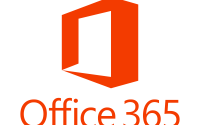Exchange 2019 Pre-requisites
Before installing or configuring any Software, the first thing we need to know is the Pre-requisites. So, over here we will be discussing about the Exchange 2019 Pre-requisites.
Starting with the Exchange 2019 Pre-requisites, there are two cases.
- Fresh installation.
- Upgrade/Migration of existing installation.
Over here I am starting with the Upgrade/Migration of existing installation.
Supported coexistence scenarios
The supported coexistence scenarios between Exchange 2019 and earlier versions of Exchange are described in the following table:
| Exchange version | Exchange 2019 organization coexistence |
| Exchange 2010 and earlier versions | Not supported |
| Exchange 2013 | Supported with Exchange 2013 Cumulative Update 21 (CU21) or later on all Exchange 2013 servers in the organization, including Edge Transport servers. |
| Exchange 2016 | Supported with Exchange 2016 CU11 or later on all Exchange 2016 servers in the organization, including Edge Transport servers. |
| Mixed Exchange 2013 and Exchange 2016 organization | Supported if all Exchange 2013 and Exchange 2016 servers in the organization meet the requirements as previously described in this table. |
Supported hybrid deployment scenarios
Exchange 2019 supports hybrid deployments with Office 365 tenants that have been upgraded to the latest version of Office 365.
Network and directory servers
The requirements for the network and the directory servers in your Exchange 2019 organization are described in the following table:
| Component | Requirement |
| Domain controllers | All domain controllers in the forest need to be running one of the following versions of Windows Server: • Windows Server 2019 Standard or Datacenter • Windows Server 2016 Standard or Datacenter • Windows Server 2012 R2 Standard or Datacenter |
| Active Directory forest | The Active Directory forest functional level is Windows Server 2012 R2 or higher. |
| Active Directory site | The Active Directory site where you install the Exchange Server must contain at least one writeable domain controller that’s also a global catalog server, or the installation will fail. Furthermore, you can’t install the Exchange server and then remove the domain controller from the Active Directory site. |
| DNS namespace | Exchange 2019 supports the following DNS namespaces: • Contiguous • Noncontiguous • Single label domains • Disjoint For more information about DNS namespaces that are supported by Exchange, see KB2269838. |
| IPv6 | Exchange 2013 and later support IPv6 only when IPv4 is also installed and enabled on the Exchange server. If you deploy Exchange in this configuration, and your network supports IPv4 and IPv6, all Exchange servers can send data to and receive data from devices, servers, and clients that use IPv6 addresses. |
Hardware
For information about deploying Exchange in a virtualized environment.
| Component | Requirement | Notes |
| Processor | Either of the following types of 64-bit processors: • Intel processor that supports Intel 64 architecture (formerly known as Intel EM64T). • AMD processor that supports the AMD64 platform. Note: Intel Itanium IA64 processors aren’t supported. Note: Recommended Supported Processor Sockets is up to 2 on physical machines. |
See the Operating system section later in this topic for supported operating systems. |
| Memory | Varies depending on Exchange roles that are installed: • Mailbox: 128GB minimum recommended • Edge Transport: 64GB minimum recommended. Note that Exchange 2019 has large memory support (up to 256 GB). |
|
| Paging file size | Set the page file to a size equal to 25% of installed memory. | None |
| Disk space | • At least 30GB of free space on the drive where you’re installing Exchange. • At least 200MB of free space on the system drive. • At least 500MB on the drive containing the message queue database. |
|
| Screen resolution | 1024 x 768 pixels (XGA) or higher | None |
| File system | NTFS is required on partitions that contain the following types of files: • The System partition. • Exchange binaries. • Files generated by Exchange diagnostic logging. • Transport database files (for example, the mail queue database). Optionally, you can use ReFS on the partitions that contain the following types of files: • Mailbox databases and transaction logs. |
None |
Operating system
The supported operating systems for Exchange 2019 are described in the following table:
| Exchange component | Requirement |
| Mailbox and Edge Transport server roles | Windows Server 2019 Standard or Datacenter |
| Management tools | One of the following versions of Windows: • Windows Server 2019 Standard or Datacenter • 64-bit edition of Windows 10 |
Notes:
- Installing Exchange 2019 on a computer that’s running Windows Server Core is fully supported and recommended. The Desktop Experience feature is no longer required.
- Installing Exchange 2019 on a computer that’s running Nano Server isn’t supported.
Supported clients
- Outlook 2019
- Outlook 2016
- Outlook 2016 for Mac
- Outlook 2013
- Outlook for Mac for Office 365


![[error]The Single Instance Store (SIS) component is not installed](/wp-content/themes/ribbon-lite/images/nothumb-related.png)
If I have exchange 2013 cas/mbx servers in on-premises and want to introduce/install Exch 2019 Edge in DMZ (no exch 2013 flavor in DMZ and no Exch 2019 Mbx role in Corpnet). Would it work just fine and be supported ? Any other thing I should look out for or any suggestions?
I thank you for sharing some documentation or article to support the scenario as well.
I found this so far: https://docs.microsoft.com/en-us/exchange/plan-and-deploy/system-requirements?view=exchserver-2019